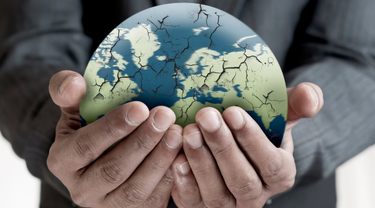One of Latin America’s most attractive markets for global trade, Peru (population 32 million) is working around the clock “to flatten the curve” of the COVID-19 crisis. Not only has President Martin Vizcarra imposed a countrywide lockdown, face masks are mandatory, and most businesses are closed until further notice.
Which sectors in your region are hardest hit by the pandemic?
Peru has implemented some of the toughest lockdown rules in the region, which is helping to mitigate the spread of COVID-19. However, these drastic measures have brought the county to a halt, leaving almost 70% of the economy in limbo. All shops, offices and factories are closed, only companies providing essential basic products and services are still functioning, including the utilities sector, supermarkets and pharmacies.
The most affected industries include tourism, aviation, retail and entertainment. The mining sector, which is essential for the economy as it accounts for roughly 60% of Peru’s exports, has been affected by the shock given its sensitivity to demand. Most mining operations are suspended and in “care-and-maintenance mode,” while only a few remote and isolated mines have been able to maintain minimum production levels.

What are some of the biggest challenges facing Canadian companies doing business in your region, and what’s your advice for managing them?
Similar to other business operating in Peru, the main concerns for Canadian companies in market are related to working capital accessibility, buyer’s non-payment risk, supply chain continuity and the uncertainty of when they’ll resume their normal business operations.
My advice is to stay resilient as best as you can. Try to take advantage of the exceptional financial measures the government is implementing, including extending debt payments dates, deferring tax payments, and getting insurance to mitigate potential risks related to your buyers. In addition, work remotely if possible to maintain your business continuity and start crafting a plan for the reopening of your business, including earmarking the opportunities your company will have once the pandemic is over.
You should also check out
Our new webinar will show Canadian companies how to access the financial relief available to you.
What is the general feeling in your business community?
The Peruvian government has prepared the largest economic plan in Latin America to mitigate the impact of the coronavirus crisis, injecting US$25 billion—12% of Peru’s gross domestic product (GDP)—into the economy. However, the business confidence index, which is always a good economic sentiment thermostat, hit a historic record low in March. This negative perception is linked to the inevitable recession and implications COVID-19 will have on the Peruvian economy, particularly micro and small businesses. The general expectation going forward for all sectors and companies is very low and most economic analysts expect the economy to drop by 4% to 8%. Yet, assuming this pandemic will be over in 2021, the economy is expected to rebound and grow 4% to 6% in 2021.
How is EDC helping in market?
Canada has a long commercial history in Peru and a significant presence in the mining, infrastructure and financial sectors. As such, EDC remains committed to helping all Canadian businesses in market by supporting them through market intelligence, connections and business strategies. Market knowledge is particularly important as pandemic-related measures and implications are constantly evolving. Regarding connections, we’ll continue opening doors and promoting Canadian goods and services to international buyers where we see a good fit. In respect to the strategy, we’re working on approaches to advance business opportunities once this pandemic is over.







